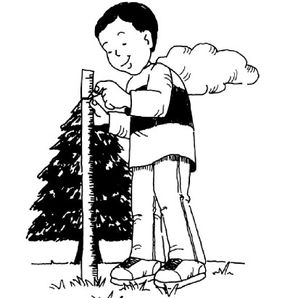How tall is that? How wide? Experiments on science projects for kids: measuring show that you don't have to be tall as a tree or have a really long tape measure to estimate considerable heights and distances. With estimating tricks, a surveying tool and some simple objects, kids can become measuring experts.
Follow the links below to find science projects on measuring that you can do with kids:
Advertisement
Use a yardstick to measure the height of a tree.
Make a simple surveying tool, and estimate the height of a hill.
Measure your latitude by the North Star.
Measure and Estimate with Paper Clips
Use an uncommon tool to size common objects.
You can measure the height of a tree with just a yardstick and a friend. Learn how on the next page.
For more fun science projects you can do with kids, check out:
Advertisement


